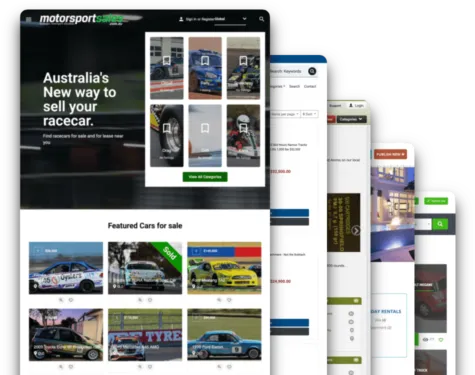Online marketplaces are thriving in today’s digital economy.
With the convenience of e-commerce, users expect quick, seamless experiences.

One of the key factors determining marketplace success is the ease of search and navigation.
When users can find what they need effortlessly, they are more likely to engage, convert, and return.
In this article, we’ll explore strategies, challenges, solutions, and innovations that simplify search and navigation in online marketplaces.
Why Simplified Search and Navigation Matter
- Increased Conversion Rates: A study by Forrester Research found that 50% of potential sales are lost because users can’t find what they’re looking for.
- Enhanced User Experience: When navigation is intuitive, users are more likely to stay on the platform longer.
- Boosting Customer Loyalty: Repeat users are 50% more likely to return to a marketplace with a smooth search experience.
- Competitive Advantage: Marketplaces with superior search capabilities stand out in a crowded digital space.

Challenges in Marketplace Navigation
Diverse User Base
Challenge: Different users have varied levels of tech-savviness.
Solution: Offer multiple navigation modes, like simple menus for beginners and advanced filters for experienced users.
Vast Inventory
Challenge: Large product catalogs can overwhelm users.
Solution: Implement categorized menus and smart suggestions to narrow down choices.
Poor Mobile Optimization
Challenge: Over 58% of marketplace visits come from mobile devices, yet many sites lack mobile-friendly navigation.
Solution: Use responsive design and simplified interfaces for mobile users.

Features That Simplify Search
- Advanced Search Filters: Allow users to filter by price, category, location, and more. Include "sticky filters" that remain applied as users refine their search. Example: Amazon’s robust filtering system helps users drill down to specific products.
- Predictive Search and Auto-Suggestions: Use algorithms to predict queries based on user input. Example: Google’s auto-complete feature saves time and provides relevant options.
- Personalized Recommendations: Leverage AI to display products based on user history and preferences. Example: Netflix’s recommendation engine increases engagement by over 80%.
Key Navigation Strategies
- Breadcrumb Navigation: Clearly indicate the user's location on the site. Benefits: Users can retrace steps without restarting their search. Example: eBay employs breadcrumbs for hassle-free navigation.
- Sticky Menus: Keep menus visible as users scroll. Benefits: Reduces the need to scroll back to the top, saving time.
- Dynamic Categories: Automatically adjust category listings based on trending searches or user behavior. Example: Etsy highlights trending categories on its homepage.
- Voice Search Integration: An emerging trend as voice commerce grows. Data: By 2024, voice commerce is predicted to account for $40 billion in sales.
Case Studies of Successful Marketplaces
Amazon
Challenge: Managing a vast inventory of products.
Solution: Advanced filters, personalized recommendations, and seamless navigation.
Result: Over 2 billion monthly visitors and a conversion rate of 13%.
Airbnb
Challenge: Helping users find suitable accommodations from millions of listings.
Solution: Search filters by location, price, amenities, and dynamic map-based navigation.
Result: A user-friendly experience that drives over 100 million monthly users.
Shopify
Challenge: Catering to diverse e-commerce businesses.
Solution: Intuitive navigation templates and AI-driven search enhancements.
Result: Empowering over 4 million businesses worldwide.
Solutions to Improve Search and Navigation
- Leveraging AI and Machine Learning: AI can understand user intent and deliver relevant results. Machine learning analyzes patterns to improve future search outcomes.
- Implementing Search Analytics: Regularly analyze search data to identify gaps. Example: If users often search for an unavailable product, prioritize adding it.
- Mobile-First Design: Use larger buttons, collapsible menus, and simplified layouts for mobile users. Data: Mobile-optimized sites see 67% higher conversion rates.
Innovations Shaping Marketplace Navigation
- Augmented Reality (AR) Search: AR allows users to visualize products in their environment. Example: IKEA’s app lets users see furniture in their homes before purchasing.
- Conversational Search: Chatbots and virtual assistants guide users through their search journey. Example: Sephora’s chatbot enhances product discovery with personalized suggestions.
- Social Search Integration: Users search based on social media trends or recommendations. Example: Pinterest’s visual search tool links users to similar products.
Predicting Future Trends
- Voice-Activated Marketplaces: Increased adoption of smart speakers will make voice search ubiquitous.
- Hyper-Personalization: AI will deliver results tailored to individual user preferences.
- Integrated Ecosystems: Marketplaces will integrate with wearables and IoT devices for seamless interactions.
Call-to-Action
Looking to Create a Marketplace? Contact Us at Yclas.

